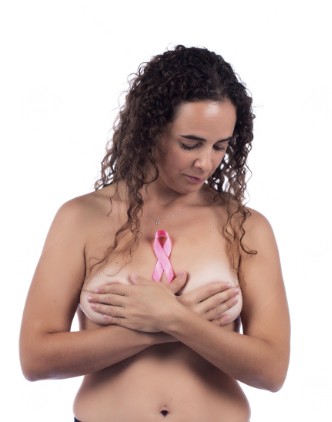
Breast cancer is one of the most widely discussed forms of cancer, but despite extensive research and awareness campaigns, there remains a significant cause that many people overlook. While genetics, age, and lifestyle are often highlighted as primary factors, hormonal imbalances and endocrine disruption are critical contributors that frequently fly under the radar. Let’s explore why this overlooked cause plays such a vital role in the development of breast cancer and why it’s so important to address this aspect of health.
Understanding the Role of Hormones in Breast Cancer Development
The human body is an intricate system of interconnected functions, and hormones are at the core of many of those processes. Hormones like estrogen play a significant role in regulating various bodily functions, including the development of breast tissue. However, when the body experiences an imbalance of hormones, particularly an overproduction of estrogen, the risk of breast cancer can significantly increase.
How Estrogen Contributes to Breast Cancer
Estrogen is essential for the development of female reproductive organs, but when levels of this hormone become elevated relative to others, such as progesterone, it can have negative effects. Estrogen dominance, characterized by higher levels of estrogen compared to progesterone, can cause the unchecked growth of cells in breast tissue, which may ultimately lead to the development of breast cancer.
Furthermore, estrogen metabolites—byproducts created when the body processes estrogen—can also influence cancer risk. One specific type of estrogen metabolite, 16-alpha-hydroxyestrone, is known to promote cancerous cell growth. When estrogen metabolism is out of balance, the accumulation of harmful metabolites can encourage tumor development.
The Impact of Endocrine Disrupting Chemicals (EDCs)
In addition to hormonal imbalances within the body, external environmental factors can also play a critical role in disrupting hormonal balance. Endocrine-disrupting chemicals (EDCs), often found in everyday products like plastics, cosmetics, and household cleaners, mimic the action of natural hormones, potentially leading to hormonal imbalances that increase the risk of developing breast cancer.
Common Endocrine Disruptors Linked to Breast Cancer
Several everyday chemicals can interfere with the body’s hormonal system, including:
Bisphenol A (BPA): A common chemical in plastics, BPA has been shown to mimic estrogen and disrupt normal hormonal functions.
Phthalates: Often used in plastics and personal care products, these chemicals can alter hormone production, contributing to the growth of hormone-sensitive cancers.
Parabens: Found in many cosmetics and toiletries, parabens are preservatives that can act as estrogen mimics, possibly leading to an increased risk of breast cancer.
How Lifestyle Choices Contribute to Hormonal Imbalance
While environmental factors like EDCs are a significant cause of hormonal disruption, lifestyle choices can also contribute to the imbalance. Diet, exercise, and stress all play a part in maintaining hormonal health.
Diet and Hormonal Imbalance
A diet high in processed foods and sugars can trigger insulin resistance and promote inflammation, both of which are linked to an increased risk of breast cancer. Additionally, diets rich in unhealthy fats can contribute to estrogen dominance, as fat tissue can produce estrogen. This excess estrogen can promote the growth of hormone-sensitive breast cells, leading to the development of cancer.
Stress and Hormonal Imbalance
Chronic stress leads to the overproduction of cortisol, the stress hormone. Elevated cortisol levels can disrupt the balance of other hormones, particularly estrogen and progesterone. Stress also leads to inflammation, which has been shown to create an environment conducive to cancer growth.
Steps to Reduce Hormonal Imbalance and Breast Cancer Risk
Understanding the role of hormonal imbalances and endocrine disruption in the development of breast cancer is a critical step toward prevention. Fortunately, there are steps you can take to reduce these risks.
- Reducing Exposure to Endocrine Disruptors
Choose BPA-free products: Opt for BPA-free plastics or use alternatives such as glass and stainless steel.
Switch to organic cosmetics: Choose cosmetics and toiletries that are free from parabens and phthalates.
Use natural cleaning products: Avoid cleaning products that contain harmful chemicals, opting for natural alternatives.
- Balanced Diet and Weight Management
Eating a diet rich in fruits, vegetables, and whole grains can help regulate hormone levels. Cruciferous vegetables, such as broccoli and cauliflower, contain compounds that help detoxify excess estrogen in the body. Maintaining a healthy weight is also important, as excess fat tissue can produce estrogen. - Stress Management
Managing stress is crucial for maintaining hormonal balance. Techniques such as meditation, yoga, and deep breathing exercises can help reduce cortisol levels and promote overall hormonal health. - Regular Exercise
Engaging in regular physical activity helps maintain healthy insulin levels, reduce inflammation, and regulate hormone production. Aim for at least 30 minutes of exercise most days of the week.
Conclusion
The major cause of breast cancer that is often overlooked is hormonal imbalances, particularly estrogen dominance and endocrine disruption. These imbalances can result from internal factors like diet and stress, as well as external factors like exposure to endocrine-disrupting chemicals. By reducing exposure to harmful chemicals, eating a hormone-balancing diet, managing stress, and maintaining a healthy lifestyle, individuals can reduce their risk of developing breast cancer.
